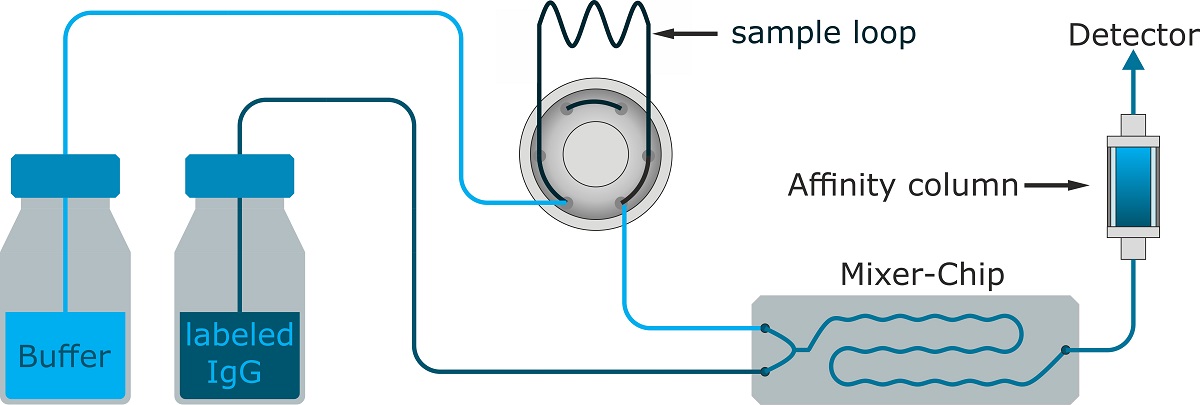The trafficking of illegal drugs by criminal networks at borders, harbors, or airports is an increasing issue in public health as these routes ensure the main supply of illegal drugs. The prevention of drug smuggling, including the installation of scanners and other analytical devices to detect ultra-small traces of drugs within a reasonable time frame, remains a challenge. The presented immunosensor is based on a monolithic affinity column with a large excess of immobilized hapten, which traps fluorescently labeled antibodies as long as the analyte cocaine is absent. In the presence of the drug, some binding sites of the antibody will be blocked, which leads to an immediate breakthrough of the labeled protein, detectable by highly sensitive laser-induced fluorescence with the help of a Peltier-cooled complementary metal-oxide-semiconductor (CMOS) camera. Liquid handling is performed with high-precision syringe pumps and microfluidic chip-based mixing devices and flow cells. The biosensor achieved limits of detection of 23 pM (7 ppt) of cocaine with a response time of 90 seconds and a total assay time below 3 minutes. With surface wipe sampling, the biosensor was able to detect 300 pg of cocaine. This immunosensor belongs to the most sensitive and fastest detectors for cocaine and offers near-continuous analyte measurement.

